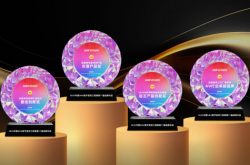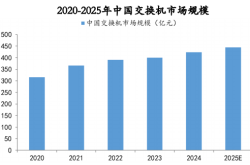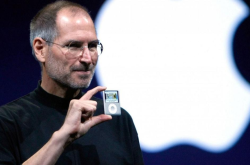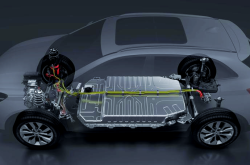Tesla Again Under the Spotlight: Electric Six-Seat SUV Market Heats Up
![]() 08/21 2025
08/21 2025
![]() 571
571
Perhaps constrained by the MPV market's limited growth, or perhaps due to a higher proportion of private replacement purchases compared to first-time buyers, automakers targeting multi-child families have redirected their focus to the SUV market. Just as a flurry of MPVs were introduced by automakers, particularly newcomers, in 2022-2023, the spotlight this year has shifted to pure electric six-seat SUVs.
In late July, the Li Auto i8 and NIO L90 were successively launched, marking the commencement of the battle for the pure electric large six-seat SUV segment. With similar usage scenarios and hardware configurations, these two models have become direct competitors.
Furthermore, the six-seat AITO M8 EV version will be officially launched in August, equipped with Huawei's latest HUAWEI ADS 4 intelligent driving assistance system and offering additional storage space. Additionally, other mainstream new force brands have recently announced plans to introduce six-seat SUVs.
Shen Fei, the new president of NIO, posted on social media: "The six-seat SUV market is buzzing in the second half of the year. More and more pure electric six-seat SUVs are emerging. In the past few days, three such models have been officially announced, underscoring the shift towards pure electric vehicles."
Beyond "pioneering" this previously dormant market, it appears that these new players share another potential "mission": "encircling and suppressing" Tesla. On July 16, Tesla announced on its official Weibo account, "Model Y L, see you in autumn." This not only marks Tesla's new model launch in China following the Model Y's debut four years ago but is also viewed by the industry as a crucial step to further segment the market and cater to the diverse needs of the Chinese market.
It seems the previous spectacle of "six sects" surrounding Tesla's Model Y is replaying. At that time, new forces employed various tactics but still failed to shake Model Y's market position for years. This time, can Model Y L successfully defend its turf?
A Clash of Titans
Despite Li Auto's repeated emphasis on its distinct brand positioning from NIO, the similar product positioning and timing of their simultaneous launches have set the stage for a fierce competition.
On August 5, Shen Fei, Senior Vice President of NIO and President of NIO's luxury brand Lexus, shared an image on a public platform suggesting that Li Auto salespeople were persuading customers to cancel their NIO L90 orders and place orders for the Li Auto i8 instead. Shen Fei expressed his hope that partners would work harder to clearly convey the value of their products to users and allow them to experience them more extensively.
Just a week earlier, Liu Jie, Vice President of Li Auto, posted a screenshot on July 24 and commented, "Is this the next main direction for smear campaigns against the Li Auto i8?" The attached image showed a user comment: "Today I test drove the Li Auto i8 and the NIO L90. The i8 feels like riding a boat, swaying back and forth, and is not as stable as the NIO L90. During the so-called intelligent driving, it almost crashed. Other aspects like space and seats are not as good as the NIO."
At that time, Shen Fei retweeted Liu Jie's post and suggested, "I suggest reporting it to the police directly."
Behind this high-level "spat" lies the competition for traffic, reputation, and even sales between the Li Auto i8 and NIO L90. As both new cars approach their critical delivery period, the battle for market share looms large. Data indicates that the Li Auto i8 received nearly 6,000 orders in its first week after launch. Meanwhile, NIO L90 delivered a cumulative total of 1,976 vehicles in just three days after its launch, ranking third on the weekly sales chart for large SUVs, and is accelerating production and delivery.
Notably, on August 5, Li Auto announced a unified configuration adjustment for the Li Auto i8, with the Li Auto i8 Max version becoming the standard configuration and the price being reduced by RMB 10,000, from RMB 349,800 to RMB 339,800. This move was once interpreted by the outside world as a reactive adjustment to the price impact of the NIO L90—the latter's starting price is only RMB 265,800, and the BaaS model even goes as low as RMB 179,800, significantly lowering the threshold for car purchases.
The i8 represents Li Auto's renewed pure electric lineup, while the L90 is crucial for NIO to achieve profitability in the fourth quarter of this year. The significance of these two products to their respective companies is evident. Meanwhile, the current fierce competition between the Li Auto i8 and NIO L90 offers a glimpse into the future competitive landscape of this market.
With other global markets experiencing declines, Tesla needs more new products to stabilize its market position in China. The Model Y L, set to be released in the third quarter, is tailored to meet the needs of the Chinese market.
After Tesla promoted the new car on its official Weibo account, Li Xiang, CEO of Li Auto, retweeted the post and commented, "A respectable six-seat pure electric SUV is coming. Users interested in six-seat pure electric SUVs priced between RMB 200,000 and RMB 300,000 can look forward to it." Li Bin, founder of NIO, subsequently tweeted, "With the continuous improvement of charging and swapping infrastructure and product technology innovation, the era of pure electric large-space SUVs has arrived."
Market Share Contest
Data from the China Passenger Car Association (CPCA) reveals that nearly 70% of private car buyers in the monthly retail sales of private passenger cars are beneficiaries of trade-ins, with first-time private buyers falling to around 30%. The significant increase in the proportion of trade-ins reflects a disruptive change in the structure of the Chinese automobile market.
Cui Dongshu, Secretary-General of the CPCA, noted that the contribution of trade-ins continues to rise, and upgraded purchases driven by consumption upgrades have become the absolute mainstream of car purchases.
"For all large six-seat products, trade-ins account for more than 80%," said a relevant responsible person from Deep Blue Auto. Large six-seat vehicles attract traditional fuel vehicle users who previously owned vehicles priced above RMB 100,000 and were from joint ventures, as well as low-priced new energy vehicle users.
From a market perspective, domestic sales of 6/7-seat mid-to-large SUVs surged year-on-year in 2025, with multi-child families accounting for a much higher proportion of purchases than the industry average growth rate. Consequently, many automakers have launched corresponding pure electric mid-to-large SUVs to seize a larger market share.
In May this year, Deep Blue Auto officially launched its new large six-seat flagship SUV, the Deep Blue S09, and began deliveries; on May 22, Geely Auto globally unveiled its new six-seat flagship SUV, the Geely Auto M9, in Milan, Italy; on July 16, IM Motors released official images of its first mid-to-large extended-range SUV, the LS9; recently, spy shots of Hovo Auto's full-size large six-seat SUV, codenamed "Taishan," were exposed. This model adopts a six-seat layout and is equipped with Huawei's advanced intelligent driving system.
"Compared to the first half of last year, the competition in the large six-seat SUV market is indeed fierce at present," said Deng Chenghao, CEO of Deep Blue Auto. Overall, the monthly sales volume of the six-seat SUV market is in the tens of thousands of units, with several star products, such as the AITO M8.
In Deng Chenghao's view, to survive the elimination round, brands must have recognition, and products must impress consumers. Insight into the market and products is crucial to winning this round. "Back then, Li Auto impressed a large number of Chinese families with five or six members with a six-seat dad car equipped with a refrigerator, TV, and large sofa. We captured the demand of dads for a better car because they found that the third row was uncomfortable and unsafe, children's car seats couldn't fit, and the trunk couldn't hold too much luggage... We solved these problems."
This has become the consensus among many automakers currently. In the large six-seat SUV market, everyone is betting on the market prospects and profit returns. J.D. Power's 2025 China Consumer Survey results show that the importance given by middle-class families aged 30-45 to space and comfort has increased from 23% in 2020 to 41% in 2025.
Industry insiders believe that with the continuous strengthening of policies and technological iterations, the proportion of trade-ins will further increase. The competition in the large six-seat SUV market has just begun. Coupled with the fact that most new force brands have reached a critical point of turning losses into profits, six-seat SUVs have become a "must-win territory" at this stage. Although the Model Y L has not yet been released, it still adds many variables to the future competitive landscape of this segment market.
This article is originally created by China News Auto. Welcome to share it with your friends. If media outlets wish to reprint it, please indicate the author and source before the text. Any media or self-media outlet that produces video or audio scripts based on any content of this article will be held legally responsible.








